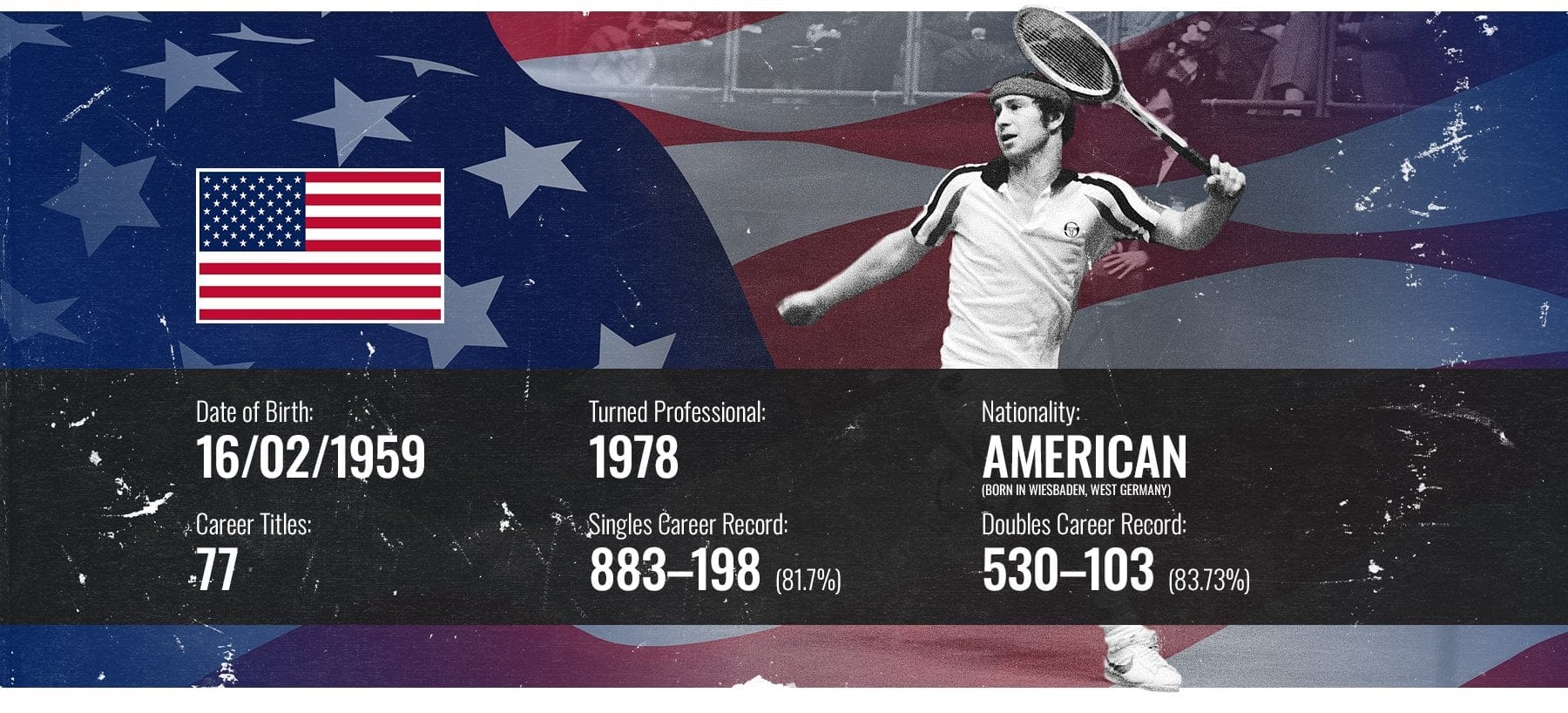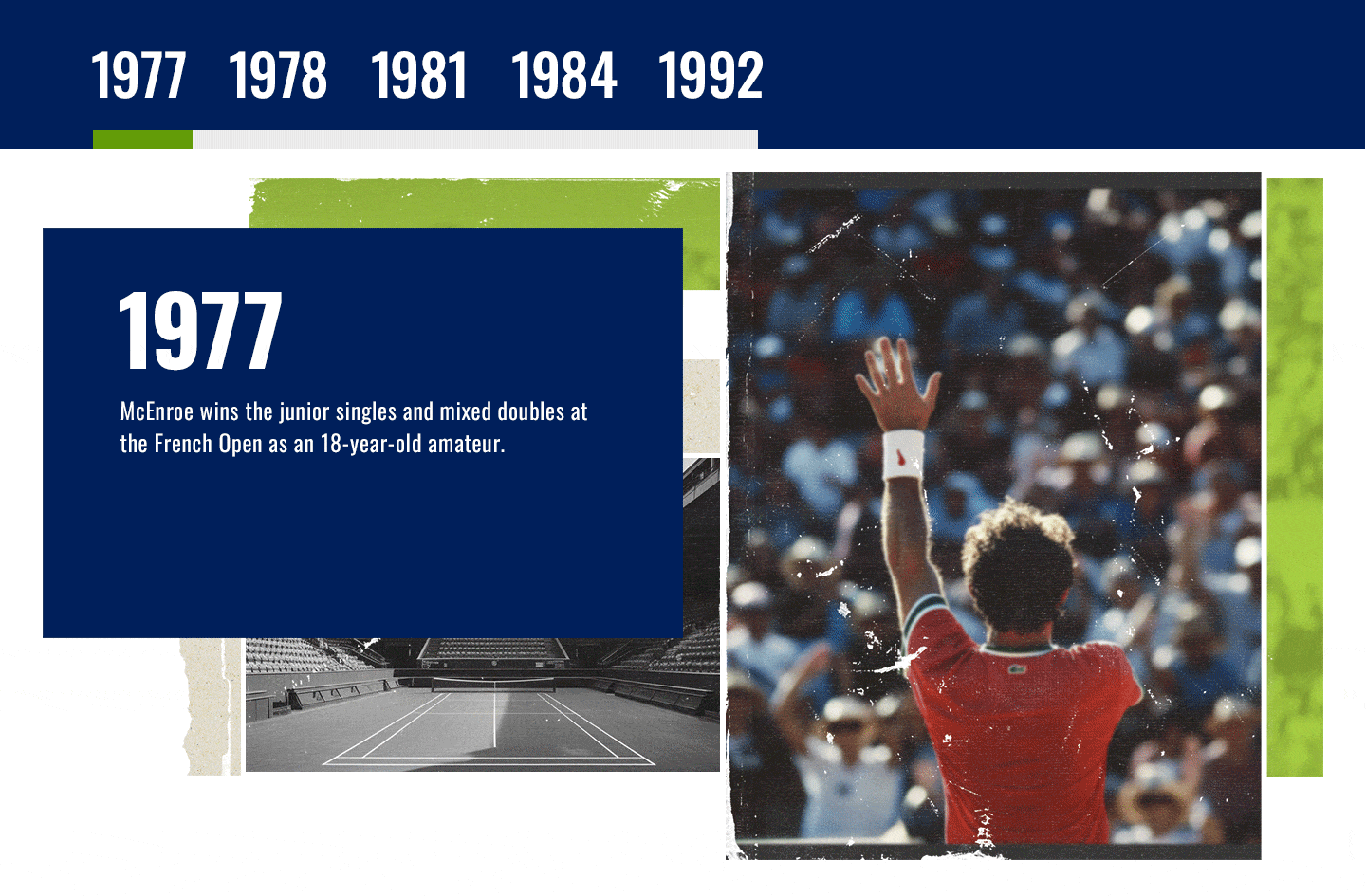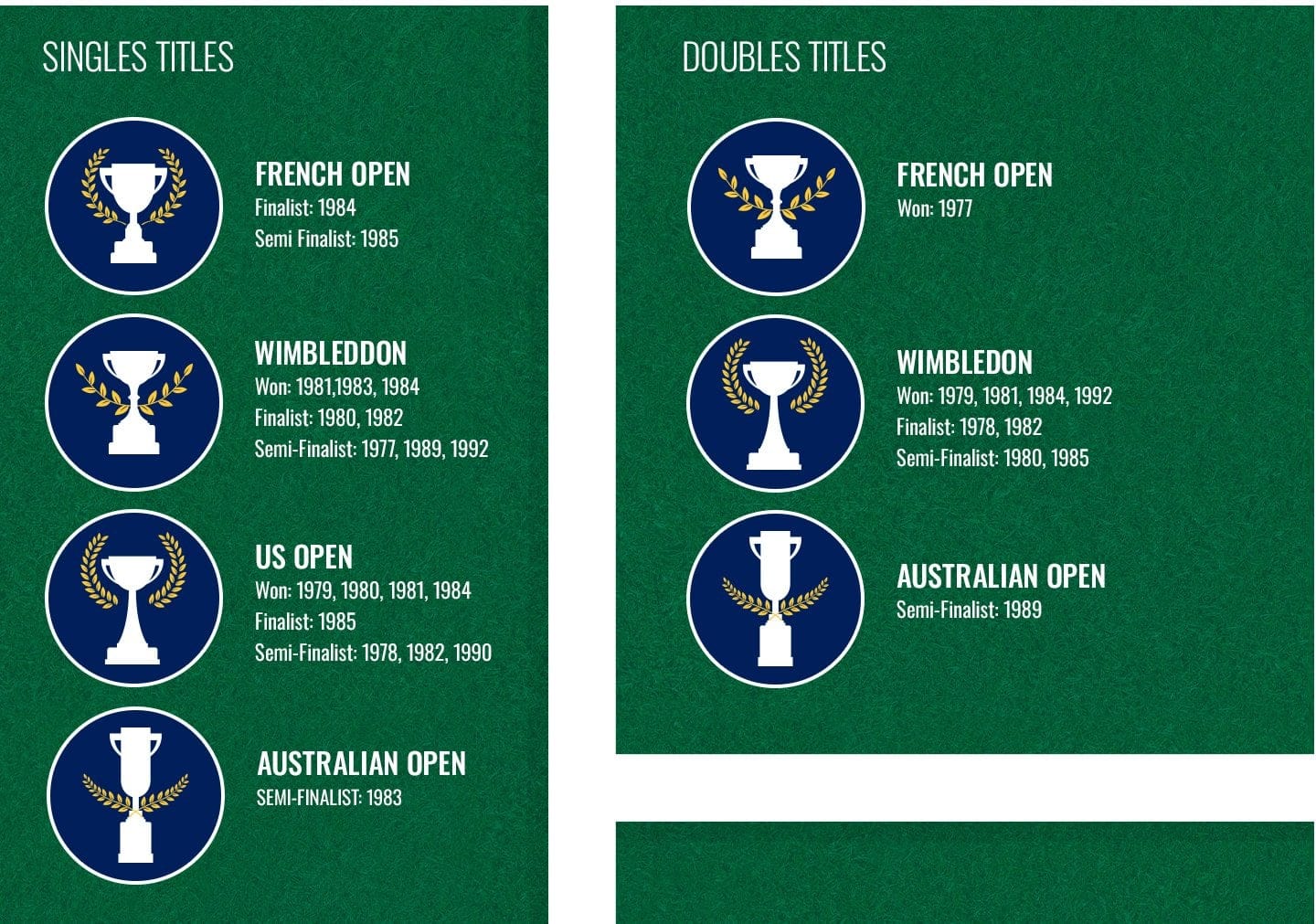
PLAYER PROFILE: JOHN MCENROE
One of the most famous names synonymous with tennis, John McEnroe was known as much for his confrontational behaviour on the tennis court (mainly with the officials, “seriously”) as he was for his duels with Björn Borg and Jimmy Connors. He is so far the only male player to hold number 1 rankings in singles and doubles tennis at the same time.



JOHN MCENROE: PROFILE
EARLY YEARS
Bursting onto the scene in 1977 as an 18-year-old amateur, McEnroe won the junior singles and mixed doubles at the French Open. He then got as far as the semi-finals (from starting in the qualifiers) of Wimbledon, losing out to Jimmy Connors.
1978 saw him turn pro, and such was his evident talent that he finished 4th in the end-of-year player rankings and signed his first professional endorsement with Sergio Tacchini. 1979 was the start of his winning streak and an Open Era record with 10 Singles and 17 Doubles titles (including Wimbledon Doubles and US Open Singles titles), seeing him finish 3rd in the world rankings.
By 1983 he had secured the world number 1 ranking, won Wimbledon - where he was booed by the crowd and uttered his infamous “You can not be serious”- won the US Open and helped capture his 3rd Davis Cup win for USA; success and bad behaviour in equal parts.
“ANSWER MY QUESTION! THE QUESTION, JERK”
1984 was McEnroe’s annus mirabilis. The year started with a 42-match winning streak, picking up both Wimbledon and US Open singles and winning the US World Team Cup. In short, he won 82 out of 85 matches, a record that still remains the highest singles win rate of the open era.
In tandem, he was also suspended for three weeks because the powers that be couldn’t levy any additional fines for his behaviour (as he had exceeded the maximum amount possible). This was after ‘questioning’ an umpire in a tournament in Stockholm and then smashing his racket into a drinks cart that was accompanied by his now routine chorus of booing from the crowd.
By 1986 McEnroe had only featured in 1 major final (US Open) despite winning other 'lesser' ranking tournaments, and the pressures of the game were taking too much from him, so he took some time out, got married, returned in '87 and took some more time out (after being suspended again).
TEAM PLAYER
Despite the fact that his lone star power was diminishing, McEnroe’s power as the second part of a double was still on the rise, with some commentators suggesting that he was the greatest doubles player of all time.
He won the US Open doubles event in 1989, Wimbledon in 1992 and the Davis Cup in the same year. Even as far away as 1999, he was still a force of nature, teaming up with Steffi Graff to reach the semi-final of Wimbledon’s mixed doubles before she withdrew to concentrate on the singles. He was ranked number 1 for doubles partners for a combined total of 270 weeks, winning a total of 10 grand slam titles.
McEnroe was also largely responsible for putting US interest back into the Davis Cup, a tournament that had been neglected with regular players since Arthur Ashe. He was part of the US team that also won the Davis Cup in 1979, 1981, 1982, and 1992.
From 1978, when the US won the Davis Cup for the first time since 1972, onwards McEnroe broke records wherever he saw them:
Number of years played: 12
Number of singles wins: 41
Total of singles and doubles wins: 59
RETIREMENT & THE SYMTHS
After retiring from the tour in 1992 (although he still played the odd game), the devil still found work for idle hands to do. In this instance, with some help from Van Halen and Eric Clapton, he learnt the guitar and formed The Johnny Smyth band.
He toured for a few years until quitting in 1997 before an album was due to come out, but perhaps the best summary for ‘big mouth’ was from his next wife, Patty Smyth:
"In future, only one of us will be working away from home on a music tour, and it ain't gonna be you!"
LEGACY
Off the court, McEnroe is known for his philanthropic efforts and commitment to various charitable causes. Despite his controversial moments, McEnroe's charisma and authenticity have made him an enduring figure in both the history of tennis and popular culture.
















